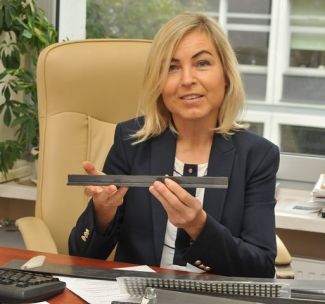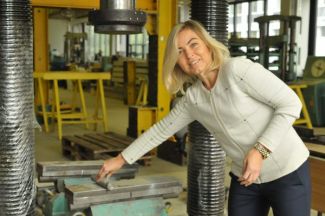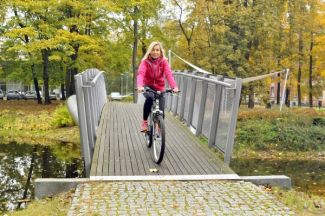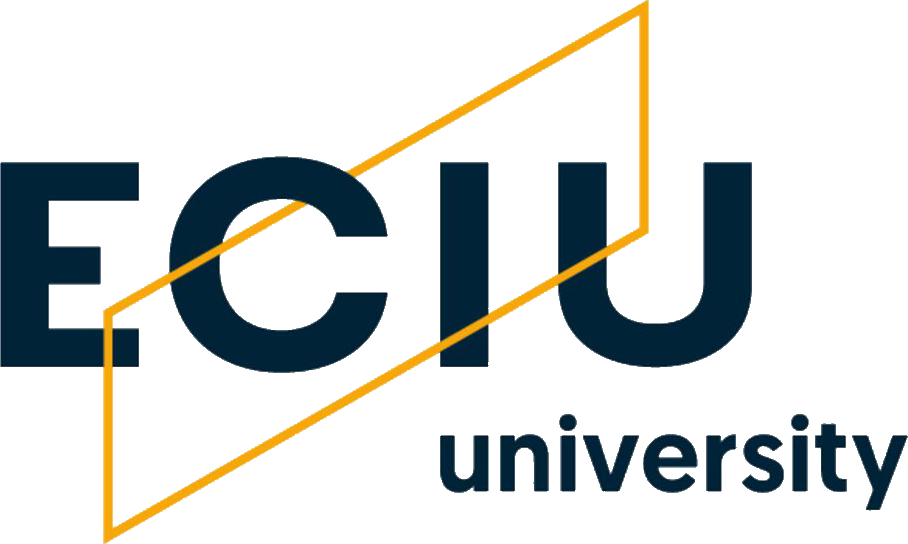You have been dubbed ‘the first lady of concrete composites’. Could you explain to us what this refers to?

My fascination with composites and their applications in civil engineering started in 1995, during the international AMCM conference on computational modelling and novel ideas in concrete and masonry structures, where I met professor Mo Ehsani from the United States, who was at the time a pioneer of applying composite materials in structural strengthening of civil engineering structures. My natural curiosity and the desire to develop new materials and technologies caused me to take up this topic seriously and start intensive research into applications of composites in structural strengthening on an international scale. Such materials are manufactured in the process of pultrusion which involves placing elongated structural fibres in an epoxy matrix and their subsequent hardening which results in rigid yet very thin laminates. In polymer composites, carbon fibre, glass fibre, aramid or even basalt fibres constitute the reinforcement, while epoxy resin systems make the matrix.
What properties do polymer composites exhibit?
Polymer composites are ten times lighter than steel, yet, at the same time, their ultimate tensile strength is ten times greater than that of steel. Therefore, their application in structural strengthening is much easier. They are usually used in the form of laminates or supple unidirectional mats and fabrics mounted at the bottom of structures that require strengthening due to their unsatisfactory flexural strength, or on the wall in the shear zones of the beams. On the one hand, their stress - strain behaviour is their advantage because they return to their original shape and size once the stresses are released (with no plastic deformation that does occur in the case of steel). On the other hand, however, they tend to render the strengthened structure more brittle. This attribute of composites requires that a different approach be taken to structural design of structures strengthened with these new materials. It is worth emphasizing that the desire to apply polymer composites in civil engineering has been driven by the need to improve structural sustainability as composites, especially carbon fibre composites, are corrosion resistant. These materials are particularly effective when - before flexural strengthening - they have been prestressed, which means that additional compressive stresses have been introduced in the area of tensile stresses in the structure (as in compressed concrete), which even makes the reversal of the initial deflection of the member and closing of the existing flexural cracks possible. The flagship example of such application is the strengthening of the bridge on the Pilsia river in Szczercowska Wieś, a project called TULCOEMPA which was carried out in cooperation with EMPA, a Swiss research institute in Zurich.
The Swiss patented solution for strengthening reinforced concrete WBS-type beams with prestressed carbon fibre reinforced composites without anchoring their end points.
At the Department of Concrete Structures laboratories, we have also been working on a new composite material - non-metallic reinforcement that may replace conventional steel rebars which, as everyone knows, is susceptible to corrosion especially when exposed to chemically aggressive environment.
Why did you decide to focus on concrete?

First and foremost, because concrete has been my inspiration. Besides, another meaning of the word concrete is 'no-nonsense, real' and I am very no-nonsense and pragmatic by nature. Also, I wanted to find something that shaped space and surroundings. Already when I was a student, classes at the laboratory were the most engaging for me. I liked tying reinforcing bars, casting concrete members. I I think that two factors influenced my decision: firstly, my mentors; I was impressed with the way they worked, with their diligence in research work and integrity in reporting their results. At the same time, my first academic teachers who used to teach me about reinforced concrete had extensive practical theoretical knowledge which they successfully applied to their professional practice and shared enthusiastically with their students. Secondly, the projects we were expected to complete were practical in character. First, you painstakingly computed structural elements (manually, mind you, which is rare nowadays); then, also by hand, you drew them - then, with a technical pen on a sheet of tracing paper. I already felt during my studies that civil engineering was what I wanted to do although, in the beginning, I did not appear to me that I would return to TUL in the future and that my former teachers would become my colleagues.
Although it is always not recognizable at first sight, concrete is ubiquitous in urban areas. How important are its properties relative to the entire structures?
Obviously, there are many types of concrete structures. Today, apart from the conventional reinforced concrete, it is possible to use prestressed concrete which enables greater spans and makes large-sized roof structures possible. This attribute of concrete, which all in all is rather brittle and only works in compression, in tandem with reinforcement also makes for a kind of composite material. It enables construction of architecturally beautiful forms. Today, flowable self-consolidating concrete, polymer concrete and high performance concrete carry a lot of potential. Translucent concrete which transmits light is a novelty and can be used to achieve visually attractive architectural elements (it is frequently used in dividing walls).
In your career, you combine research and professional practice. You also serve as a vice dean and dean's proxy for technology transfer. Which of these activities do you find the most satisfying?
Again: tangible outcomes. My academic activity indeed covers many planes which are all of great interest to me. From cooperation with international teams to engineering tasks to cooperation with constructions companies. My role as an academic teacher who tries to share her knowledge with students whom she considers partners is also very important to me. It is important to tap into young people's potential and spark their enthusiasm. All in all, the field of study they decided to pursue is not an easy one and in their professional careers they will be performing very responsible construction tasks.
You have been involved in the Girls Go Tech (Dziewczyny na Politechniki) action. What reasons do you use to convince female soon-to-be high school graduates that technical university would be a good choice for them?
Technical university means science and maths and they require thinking and understanding. Thinking and understanding enable growth and development because if you do not understand a topic you cannot imagine theoretical problems that need to be applied into engineering practice. Knowing and understanding the world around you inspires you to change it, improve it - this is what technical universities are about. Science inspires learning, discovery and testing ideas that sprout in your mind in practice. Technical studies also provide an opportunity for experiential learning.
You have been seen riding your bike on campus. Is this how you relax?

Physical activity is very important to me, it helps me recharge effectively. I like jogging in particular because it is demanding and inspiring at the same time. I dislike treadmills and only jog outdoors where I can watch the surroundings. I have been riding my bike to work for over 15 years. At first, I was the only one, which caused my colleagues and students to raise an eyebrow. I stayed true to my healthy habit. Today, I see that it has become a good practice among some of my colleagues and many students who choose to ride their two-wheelers.
It is great to be a scientist because...
… scientists create, shape space, solve problems, change the environment, the world they live in. Civil engineering offers many possibilities. Civil engineers create attractive, functional, bold and, above all, safe structures. Exact sciences are an endless source of inspiration.
